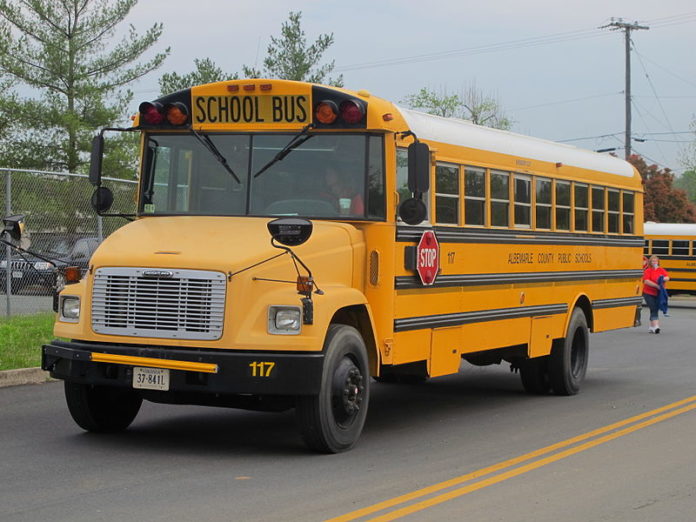A Senate committee has sliced roughly $120 million from the governor’s budget recommendations for public schools, including money targeted for special education and adding more child care slots in Kansas.
The Senate Ways and Means Committee on Friday took up the budget proposal recommended by the Education Committee, which deleted a series of proposals by Democratic Gov. Laura Kelly.
The Education Committee struck $119.8 million from the schools budget, including $74.9 million proposed for funding special education and $30 million for grants that would be used to construct new child care slots.
The governor’s special education proposal was the first of a five-year plan for funneling more state funds into special education.
While the money for the governor’s proposed enhancement packages were removed from the budget for now, lawmakers indicated it’s possible that some or all of it will be added back later during the budget process.
Republican state Sen. Molly Baumgardner, chair of the Education Committee, said it was premature to put money into special education until the Legislature can review and develop a new formula for funding for special education.
Public education advocates have been urging the governor and the Legislature to fully fund special education and comply with a state law that requires the state to cover 92% of excess costs for providing special education.
The state education department says that special education is currently funded at $528.2 million, or 69.3% of excess costs.
Baumgardner told the Ways and Means Committee that the current special education formula produces funding disparities, with some school districts getting funding totaling more than 100% of excess costs and other districts getting less.
“Putting more money at this point into the special education formula will simply cause us to continue to elevate the funding percentage for school districts that are exceeding 100% in funding and those that are lower in percentage in funding,” she said
“To add more money will continue that imbalance of districts receiving in excess of 100% and those districts receiving well below the 92% state average,” Baumgardner said.
“Simply adding more money to the formula will not change the distribution process,” she said.
Baumgardner acknowledged there will always be funding disparities in special education partly because there are differences in pay for staff and special education teachers.
“Those are real costs,” she said.
“But what there shouldn’t be is a distribution-of-funds disparity.
“There shouldn’t be such a broad disparity where one school district would receive more than 1,000% of actual costs and another district would receive only 63% of actual costs,” she said.
Baumgardner said she plans to hold hearings about what adjustments can be made to the special education formula so that the disparity in funding percentages can be evened out.
However, Baumgardner said lawmakers are still awaiting for information about special education funding from the state education department.
Baumgardner noted that there was a bill introduced in the House to address the special education formula, although it was greeted with overwhelming opposition by public education advocates earlier in the week.
Republican state Sen. J.R. Claeys, a member of the Ways and Means Committee, noted the special education funding will likely be added back to the budget with a revised formula later in the session.
“We simply would not be setting this aside for the session. We would be seeing this again at a later date,” Claeys said.
Baumgardner wouldn’t commit to funding every one of the governor’s budget enhancements, but added, “There certainly will be recommendations that come forward.
“To say that we’re going to wipe out that funding for public schools would be incorrect,” Baumgardner said.
Republican state Sen. Carolyn McGinn, who once chaired the Ways and Means Committee, cautioned that there’s not always a follow-up to the budget where money can be added.
“I hope that ideas and policies are being drafted like next week and then after turnaround I I would hope that the committee could start working on that,” McGinn said.
“What I would hate to see that we’re having to make a decision on this at 2 o’clock in the morning on the last day of regular session,” she said.
McGinn said she hoped that Baumgardner would make this a priority after turnaround given that there’s not always a follow up budget where money can be added.
The Senate’s top Democrat Dinah Sykes and Democratic Sen. Pat Pettey opposed the cuts when the Education Committee met on Thursday afternoon.
“The reckless and shortsighted decision by a small group of Senate Republicans to hijack the education budget and drastically cut funding for special education and child care is par for the course,” Sykes said in a statement Friday.
“Failing to fund special education forces our schools to redirect dollars from critical general education needs to special education,” she said.
“And we have all heard loud and clear that child care is a massive issue for our constituents.
“Here we had an opportunity to address those needs, and instead a small few jeopardized that with politics. Enough is enough— we can’t play political games with our kids’ future.”
Republican state Sen. Chase Blasi, a Wichita Republican and a member of the Education Committee, noted that the education budget still meets the state’s obligations from a 2019 court decision on school funding.
“The committee recommended $250 million in additional funding for our schools. Only Democrat math would assume that’s reckless,” Blasi said.
Pettey took exception to cutting money that would go toward creating child care slots when the states need about 85,000 to meet the demand for child care.
The $30 million in one-time funds was intended to match local and private dollars to create more slots.
The money would augment the $55 million that the state has already awarded in federal funds for construction of 5,655 new child care slots.
A House committee recently agreed to remove $15 million proposed by the governor that would have gone toward grants for child care providers that struggled financially emerging from the pandemic.
“The No. 1 issue from workforce development in the state of Kansas is child care,” Pettey said.
















